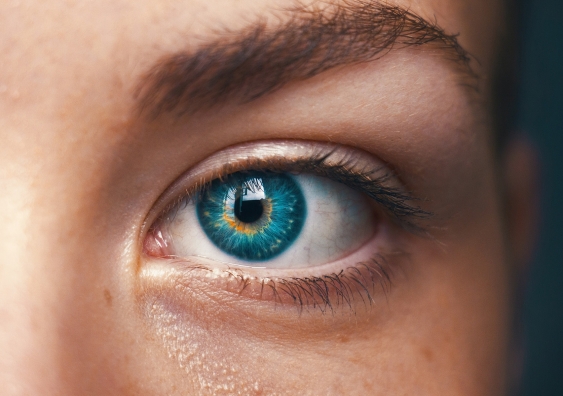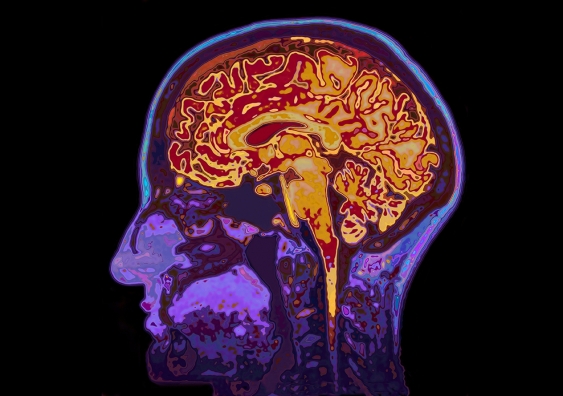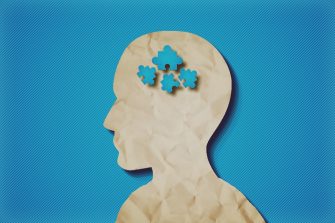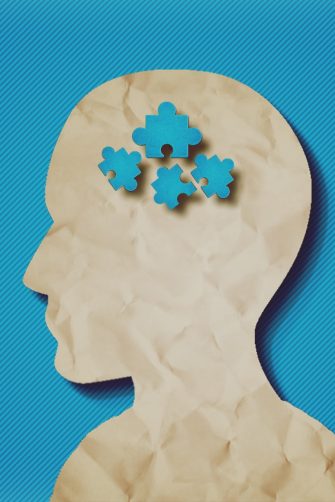A psychologist from UNSW Sydney explains what intuition is and how you can harness it to make better decisions.
Have you ever noticed a drop in your stomach, an increase in your heart rate, sweaty palms, or tingling in your fingers before making a decision? Well, that may have been your intuition talking, and as Professor Joel Pearson explains, opens in a new window, sometimes it’s worth listening to.
Prof. Pearson, from the School of Psychology, is the founder of the Future Minds lab, opens in a new window and an expert on cognitive neuroscience. Historically, intuitive thinking has been considered non-scientific compared to logical or rational thinking – spiritual or other-worldly, even – and now, Prof. Pearson and his team are keen to bring the relatively new science of intuition into the spotlight.
At any moment, we are absorbing huge amounts of information about the world around us, but lots of this information enters the unconscious part of our brain. Intuition is a process that happens in this hidden part of our mind. But, as Prof. Pearson explains, if you have the tools, it’s something you can tap into and use for better decision-making.
“We have a vast amount of unconscious information in our brain,” says Prof. Pearson. “Think of our brains as like an iceberg. There’s just a tip sticking out of the water, and that’s what we're conscious of at any one time. But there is this vast amount of information concealed underneath.
“And so if you can tap into it, and use that information reliably, then it can be used to your advantage.”
Media enquiries
For enquiries about this story and to arrange interviews please contact Lilly Matson.
Tel: +61 426 656 007, opens in a new window
Email: l.matson@unsw.edu.au, opens in a new window

What is intuition?
In the past, processes that were considered non-rational, such as intuition, cognitive biases and visual illusions, were all boxed together by psychologists. “But all these things have different characteristics, so conflating them is not a good idea scientifically,” Prof. Pearson says.
“At the beginning of our research, it became obvious that there wasn’t a single clear idea of what intuition was.”
So, before working on intuition in the lab, Prof. Pearson and his PhD student Galang Lufityanto had to define exactly what it is. “Once you understand exactly what intuition is, and you understand the brain machinery behind it, rather than just the psychology, the role and machinery of intuition becomes much clearer.”
The pair started by stripping back what they knew about intuition and building up with the most basic ingredients. “In doing this, we defined intuition as ‘the learned productive use of unconscious information for better decisions or actions’.”
There’s a growing case for using our intuition, because people are having to make even more rapid decisions with even less information.
How can it be measured?
Cognitive processes that happen internally, such as mental imagery or intuition, are extremely hard to study.
“In my lab, we figured a whole new way to study intuition, opens in a new window objectively and reliably, to the point where it becomes tangible,” says Prof. Pearson. “We think of our work as a microscope to the mind.”
Importantly, our bodies can react to a situation without us being conscious of it. This is called ‘interoception’, and it is one of the key ways Prof. Pearson has been able to measure intuition.
“In our research lab, we have various techniques where we are able to show study participants an image of a snake or spider, and then suppress it outside of their awareness, so they never actually see it, but the emotional part of their brain is still able to respond to it,” says Prof. Pearson. “And because of that, your heart rate will go up, you'll start sweating, all these things physiological things will start happening.”
Ultimately, this means that even when you are not consciously aware of something, your body can give you signals.
When to listen to your body?
Interoception is another way of describing the internal perception of your body.
“Your internal systems are always being monitored.” says Prof. Pearson. “‘Am I hot? Am I cold? Am I hungry? Do I need the bathroom?’ And if you're happy or sad, or scared, your body is able to pick up on the signals that come from the unconscious parts of the brain, and they can manifest in a tight chest or a feeling in your stomach.”
Interestingly, some can feel interoception more than others. “Some people can just sit there and feel their heartbeat, they can tap it out with their finger, while other people have no idea. We have very different sensitivities to our internal state of our bodies. But whether you can feel interoception already, or not, the idea is to practice using it.”
To help harness your intuition, Prof. Pearson has developed 5 tips that can be remembered using the acronym ‘SMILE’
S – Self awareness. Before using your intuition, it’s important to check in on your emotional state. If you’re overly emotional – positive or negative – then don’t use intuition.
M – Mastery. Intuition is something you have to learn. You must have experience with a subject before you can use intuition. For example, if you’ve just learned to play tennis, you have to learn the basics so your brain can build connections and start to learn how to predict good or bad outcomes.
I – Instincts and addiction. People will often use instinct and intuition interchangeably, but while intuition is something you learn, instinct is something you are born with. For example, if you give a baby a slice of lemon, it will put it in its mouth and then spit it out.
Here, the reference to addiction is as a warning that the draw toward addictive things, from alcohol, to gambling, to social media, can naturally feel like intuition. That’s because a craving (or addiction) gives you a natural internal feeling to do something and it can mess with our internal perception system, or interoception. While it can feel like intuition, it’s important not to confuse these two things.
L – Low probability. This is a reference to not try to use intuition or to ‘feel’ your way around anything to do with numbers or probabilities. When we use our feelings and emotions to judge probability, we can’t process numbers, and we tend to misjudge them.
E – Environment. This links back to mastery and learning. Associative learning, the kind that is demonstrated by Pavlov's dogs, is the kind you use to learn intuition, and it’s context specific. So, intuition is location specific and doesn’t transfer well to different environments. For example, if you learnt to play tennis on a hard surface, you're training yourself and your intuition to how the ball and the opponent will react under those specific conditions, this means that your intuition will necessarily transfer over to playing tennis on grass.
Finally, it's important to remember that intuition is nuanced. “It’s not a black and white thing, it's not something you can just go and use whenever, for whatever you want. Because there are biases, and there are dangers. So, you need to understand what it is and how to use it, in order for it to serve you best,” says Prof. Pearson.
When, and when not, to use your intuition
It’s known that if you train AI on biased information, then the AI will perpetuate the bias in its output. “And any human learning is the same,” says Prof. Pearson.
“There are many unconscious and cognitive biases to be aware of.” It means that essentially, if you train your intuition on out of date or biased information, then your intuition will be off.
“With our unconscious bias it comes back to thinking about our environment and thinking about what we’re feeding our intuition with and avoiding absorbing these biases where we can.”
While these biases do exist, intuition is commonly used in both sport and business scenarios. "Sport is often under time pressure, where you have to make a rapid decision with no time to think through the probabilities,” says Prof. Pearson. “And we know that physical actions have access to the unconscious, which makes sport a great scenario for tapping into your intuition.”
Similarly, people in leadership roles talk about having to make rapid decisions with very little information or ambiguous information. “Often, they don't have the luxury of being able to just wait for more information, to think about it deeply, they have got to make a decision with whatever they know at that one point in time, and then keep on moving forward. And this is where intuition can be useful,” says Prof. Pearson. “But also, just as much when meeting new people, maybe that strange feeling you get in your chest on a first date, maybe its butterflies, or maybe something is just off with the person. Many people report feeling a strong ‘gut response’ when meeting someone on a first date.”
Keep practising intuition
To harness your intuition, Prof. Pearson suggests having a daily practice, and to digest the SMILE rules, to the point where tapping into your unconscious mind can begin to become automatic.
“It’s safest to try and practice intuition on a smaller scale to begin with,” he says. “You don't need to understand where it's coming from, just notice what you’re feeling and whether the outcome is a positive or negative one, and note it down.
“There's a lot of talk at the moment about the world being more unpredictable and there is more uncertainty now than ever before. So, there’s a growing case for using our intuition, because people are having to make even more rapid decisions with even less information.”
Professor Joel Pearson’s new book ‘The Intuition Toolkit, opens in a new window’ explores the new science of knowing what, without knowing why in more detail.
Related stories
-

Hallucinations induced in lab could be key to better understanding and treatment
-

Windows to the soul: Pupils reveal 'aphantasia', the absence of visual imagination
-

Can't get you outta my head: neuroscience study finds 'hidden' thoughts in visual part of brain
-

Our brains reveal our choices before we’re even aware of them: study





